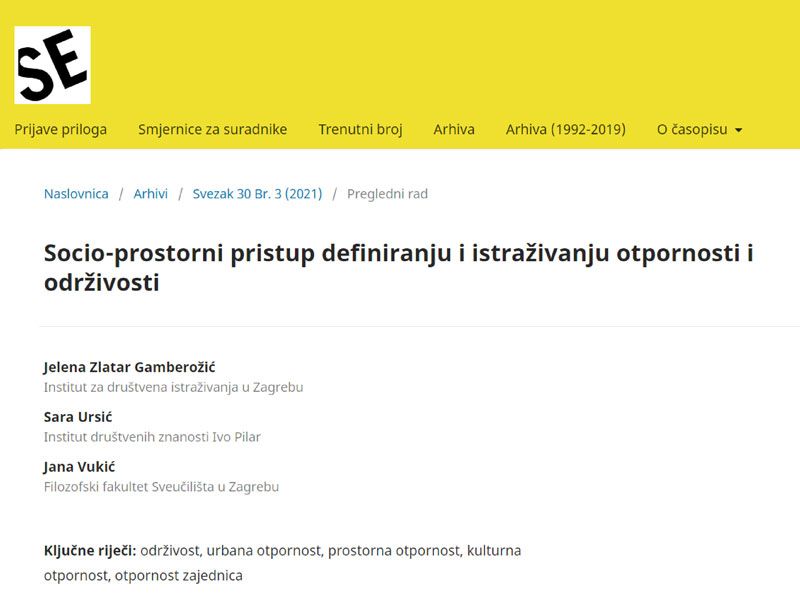Notifications list
Socio-spatial approach to defining and researching resilience and sustainability
Published: 14.02.2022.

Jelena Zlatar Gamberožić, PhD, Sara Ursić, PhD and Jana Vukić, PhD are the authors of the paper ”Socio-spatial approach to defining and researching resilience and sustainability”. The paper was published in the journal Socijalna ekologija, 30 (3).
In recent decades, the concept of sustainability has become an integral part of the social sciences. Despite the fact that it arose from the ecological paradigm, the ecological dimension is only one of the four pillars of sustainability, alongside the economic, social and cultural dimensions, which together constitute what we today call sustainable development. In a similar way, we can observe the concept of resilience, positioned within the broader notion of the socio-ecological system, which is why it is often used in the responses to environmental, natural or biological disasters. The primary purpose of the analysis and evaluation of the concepts of resilience and sustainability in this paper is to attempt to set an integrative theoretical framework for the study of urban and rural areas, as well as local communities from a sociological perspective. The definition and analysis of these concepts, delimitation of their differences, and reflection on urban resilience, opens up the possibility of a more detailed and concrete research of resilience. Understanding spatial, social and cultural resilience is closely linked to the concept of community as an actor in this dynamic process. Especially in the context of social resilience as a tool for improving (rural and urban) space, the concept of community is crucial for understanding contemporary socio-spatial relations. At the same time, the spatiality and locality of the community are very important in re-thinking and re-examining some new dimensions of communities. The localization of resilience and sustainability happens precisely by means of the community, whether it is a spatial or cultural localization.
The paper is available at the link.
